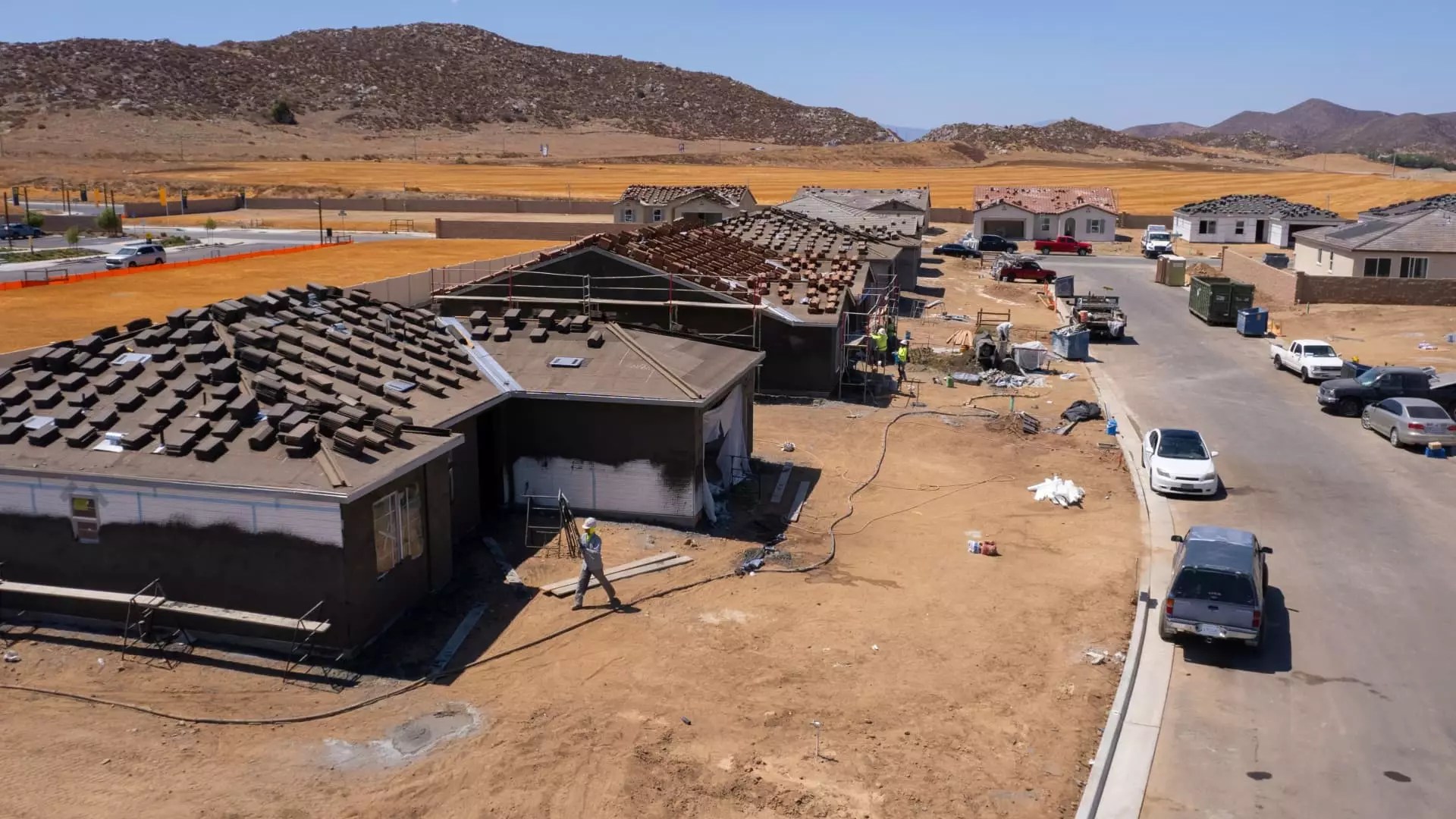The U.S. housing market is currently experiencing a transformative phase, characterized by intense demands that have positioned major homebuilders at the forefront, while creating an environment where smaller builders are facing increased vulnerability. This dynamic has not only sparked a flurry of merger and acquisition (M&A) activity, but it has also drawn interest from international players, particularly from Japan. With industry leaders vigorously pursuing expansion strategies, the implications for the housing market—and its future—are both profound and multifaceted.
According to Margaret Whelan, a prominent investment banker active in the homebuilding sector, there has been an unprecedented surge in M&A transactions within the industry this year. The total number of completed deals stands at 19 thus far, supplemented by additional negotiations expected to close before year-end. This uptick starkly contrasts with an average of only 12 deals per year over the past five years. The driving force behind this rise in M&A activity has been the immense demand for housing, which has been re-energized by historically low mortgage rates during the pandemic, prompting a wave of buyers to enter the market.
However, while the revitalization of housing demand has provided impetus for consolidation, it has also contributed to a notable housing shortage. The dual effect of increased buyer activity clashing with rising interest rates has led to a conundrum known as the “mortgage rate lock-in effect,” wherein existing homeowners are deterred from selling. Instead of trading in their low-rate mortgages for potentially higher ones, many choose to stay put, further constraining the housing supply.
The competitive landscape has increasingly favored larger, publicly traded builders, who have seen their market share bolster from 30% to an impressive 50% in five years. This shift is attributed to several inherent advantages, primarily related to cost structure. Public homebuilders enjoy cheaper access to capital than their privately-held counterparts, allowing them to finance acquisitions without incurring excessive debt. This financial leverage has enabled public builders to dominate the field, effectively consolidating their positions as key market players.
The need for growth and geographical diversification is an essential element guiding the strategies of these larger builders, who are aggressively seeking to expand their footprint across different markets and product types. This pursuit is often facilitated through strategic acquisitions of smaller firms that struggle to compete against their financial heft and resources.
An interesting twist in the current M&A landscape is the pronounced interest of Japanese homebuilders, which accounts for approximately half of the deals facilitated by Whelan this year. These companies, such as Sekisui House, are drawn to the U.S. market due to stagnating growth prospects domestically. Their capital, which is relatively inexpensive, allows them to engage in competitive bidding for American firms.
Moreover, Japanese builders possess unique advantages in the home construction arena. Their approaches to value engineering are noteworthy, often leveraging advanced technologies and manufacturing processes to minimize waste and enhance efficiency. Techniques such as 3D modeling enable Japanese firms to simulate the building process before actual construction, yielding substantial cost savings—even as high as 30% reduction in material waste.
Whelan’s hopes are clear: she envisions that the infusion of Japanese efficiencies could pave the way for more affordable housing solutions in the U.S. This cross-pollination of ideas and strategies could revolutionize how homes are built, similar to advancements realized in the automotive industry.
Looking ahead, the trend of M&A activity in the homebuilding sector is expected to persist into the next year. The inherent lag time between deal initiation and execution suggests that the current wave of activity may just be the beginning. The changing political environment—especially under a new administration—could also shed light on potential changes in federal policies regarding land use and zoning regulations.
However, not all prospects are optimistic. The fast-evolving landscape is accompanied by challenges, particularly concerning rising labor and land costs. Additionally, proposed immigration policies could threaten the labor force that supports this critical sector. The intricate balance between demand for housing and the costs associated with land and labor will play a pivotal role in shaping the evolution of the industry.
The current dynamics within the U.S. homebuilder market reflect a complex interplay of increased demand, strategic consolidation, and international interest, all set against a backdrop of economic and social challenges. The next few years will be critical as the industry navigates these waters in pursuit of stability, growth, and innovation.


Leave a Reply